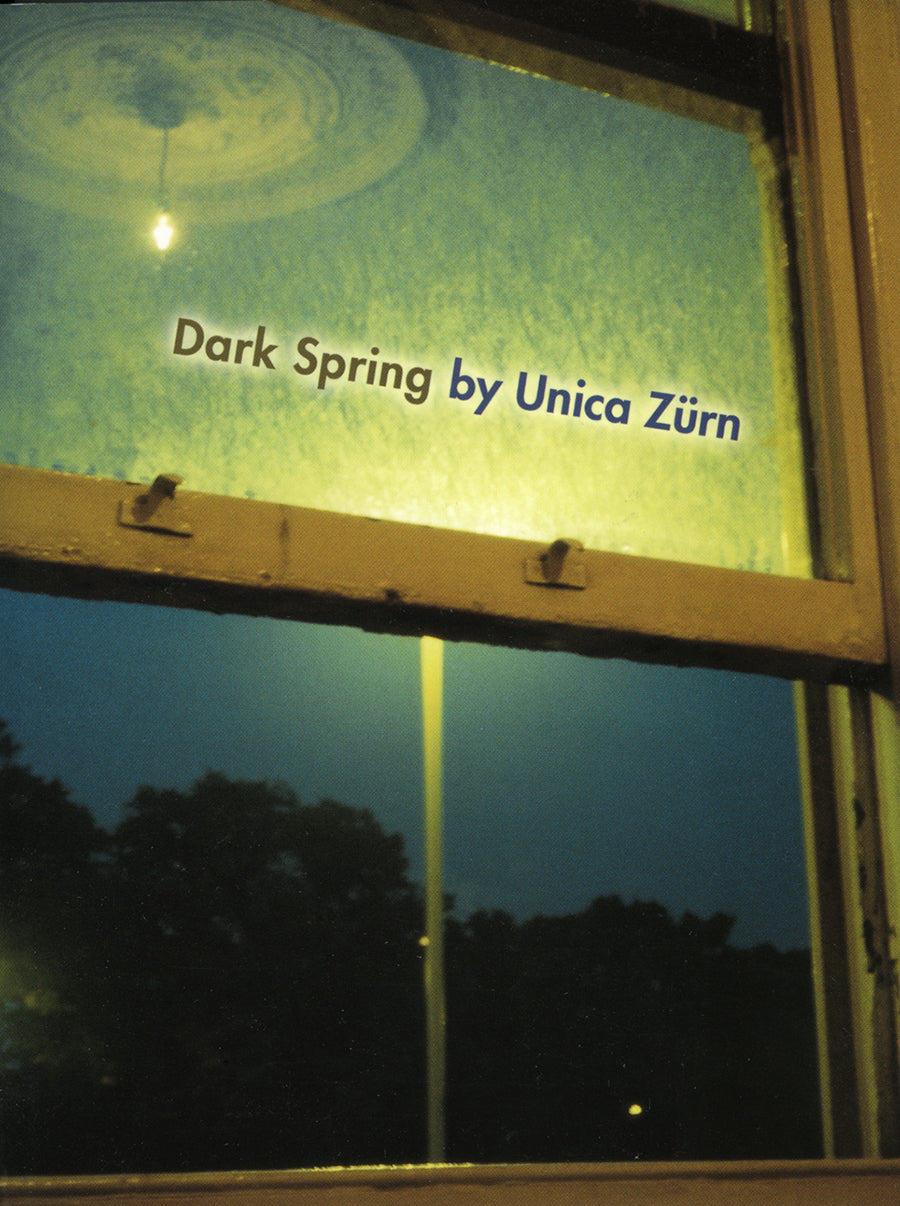
Dark Spring by Unica Zürn
Regular price
$13.95
Sale
“For who could bear love without dying from it?”
Dark Spring is an autobiographical coming-of-age novel that reads more like an exorcism than a memoir. In it author Unica Zürn traces the roots to her obsessions: the exotic father she idealized, the “impure” mother she detested, the masochistic fantasies and onanistic rituals which she said described “the erotic life of a little girl based on my own childhood.” Dark Spring is the story of a young girl’s simultaneous introduction to sexuality and mental illness, revealing a different aspect of the “mad love” so romanticized by the (predominantly male) Surrealists.
Unica Zürn (1916-1970) emigrated in 1953 from her native Berlin to Paris, in order to live with the artist Hans Bellmer. There she exhibited drawings as a member of the Surrealist group, and collaborated with Bellmer on a series of notorious photographs, of her nude torso bound with string. In 1957, a fateful encounter with the poet and painter Henri Michaux led to the first of what would become a series of mental crises, some of which she documented in her writings. She committed suicide in 1970 — an act foretold in this, her last completed work.
“Preadolescent sexuality merges with depressive fantasy… Unusual and memorable fiction.”
— Kirkus Reviews
Dark Spring is an autobiographical coming-of-age novel that reads more like an exorcism than a memoir. In it author Unica Zürn traces the roots to her obsessions: the exotic father she idealized, the “impure” mother she detested, the masochistic fantasies and onanistic rituals which she said described “the erotic life of a little girl based on my own childhood.” Dark Spring is the story of a young girl’s simultaneous introduction to sexuality and mental illness, revealing a different aspect of the “mad love” so romanticized by the (predominantly male) Surrealists.
Unica Zürn (1916-1970) emigrated in 1953 from her native Berlin to Paris, in order to live with the artist Hans Bellmer. There she exhibited drawings as a member of the Surrealist group, and collaborated with Bellmer on a series of notorious photographs, of her nude torso bound with string. In 1957, a fateful encounter with the poet and painter Henri Michaux led to the first of what would become a series of mental crises, some of which she documented in her writings. She committed suicide in 1970 — an act foretold in this, her last completed work.
“Preadolescent sexuality merges with depressive fantasy… Unusual and memorable fiction.”
— Kirkus Reviews
